That product is suitable, although at the service temperatures we use the high temperature aggregates are really a waste of money and just add to the freight costs. In addition as the material does not get vitrified at the temperatures we use it relies on its strength from the chemical bond of the calcium aluminate cement. It is really designed for a much higher service temperature as used in furnaces and kilns where it is fired carefully under a strict firing schedule to service temperatures that vitrify the material.Look at the strength after 1000F compared to 2500F. That's not to say it doesn't work, it does, just not that much better than the homebrew mix.
Regarding the floor, it really is worth the effort to use a firebrick floor. If you use castable and do the floor in one piece, it will certainly crack, probably right down the middle as any large cast section is prone to do from uneven heating and therefore uneven thermal expansion. Because the floor has the fire directly on top of it in the centre the temperature spikes up way to fast for the material to adequately cope with the uneven thermal shock. A cast refractory floor can also be prone to surface spalling. Having said that my home oven was built back in around 2007 with a one piece cast refractory floor and although it developed one crack right down the middle, still fires as it always has, but only gets used about once a fortnight, not daily as you might want.
The other big problem with all mobile ovens is transport. Being heavy brittle material they do not like bumps and vibrations. Make sure you have the springs rated for the appropriate load an fit shocks to the trailer.
X
-
Hey guys, I put my oven build to a halt for awhile as I was getting other aspects of my business ready, like ordering and designing the trailer which has a 2 month lead time. I figured during that 2 months (which started recently) is when I would focus in on getting the oven built.
The links attached show the final fiber glassed mold that I will cast the refractory cement atop.
I am going to go with Karangi Dudes method more or less for designing the stand. His design seems simple yet effective, so thanks for the idea Karangi.
I have a couple of general questions that you all may have some input on. The first being, I was initially going to use homebrew, but I decided to look for proprietary mixes that would be more reliable. I found a distribution company about an hour and a half away that sells a product called KS-4T and I was wondering if anyone had thoughts on it. The mix is very similar to what forno bravo says they use for their ovens. I will link the spec sheet. Data Sheet - KS-4T.pdf Bakeout - KS-4T.pdf
The next question is, do you think I could cast a floor using this product as well? I know that the general consensus is that fire bricks work and have proven to be reliable so why risk something going wrong, but I can't help but think how nice a single cast floor would be when making many pizzas at a time, I think I could get very consistent cooking on the underside of the pizza, more so than bricks. Let me know what you all think!
Leave a comment:
-
David S.
Do you by chance have any information for how I could look up the two people you mentioned that have trailers with two smaller ovens instead of one large oven? I would love to look into them and see how they do things.
Thanks in advance.
Nate
Leave a comment:
-
Nouvopizzas, I just used some 3mm plate in 1200mm lengths it was high enough to come up about 100mm above the insulation making it about 200mm.
We put a fold at the front and tacked it to the base, then with pieces of 90mm timber used as spacers we just bent it around the base of the oven tacking it as we went, 3mm plate bends very easily
Did you have a look at my build here is the Link; https://community.fornobravo.com/for...-s-mobile-oven
Leave a comment:
-
Any powdered clay is ok, but don’t use Bentonite because its extremely small particles lead to even more shrinkage. I don’t use the term “fire clay” because although that’s commonly used in the US to describe the clay used by the building industry as a mortar improvement. In Australia it is referred to, more properly, as “bricklayers clay”. To a potter fire clay is a highly refractory, able to withstand extreme temperature (well outside the range we use) more than twice as much. This makes it an expensive choice over the cheap fire clay supplied by the building suppliers.
You want a dense castable which will be thermally conductive with plenty of thermal mass to store heat. Adding perlite or vermiculite to the mix reduces conductivity and thermal mass as well as making the resulting casting weaker. It is a good insulator but should be used as an insulator outside the dense inner casting.
There will be no give in the fibreglass mould. Make sure you use a release agent. I use a 50/50 mix of kerosene and motor oil. Not too much because you don’t want the casting to be coated with the stuff or you’ll need detergent to clean it off.
The very fine pp burnout fibres should be added at 1% by volume. They are hard to disperse so should be pulled apart and carefully added then mix way more than you would think.
Getting the right consistency of the mix is difficult but extremely important. Too much water will lead to slumping and excessive shrinking, to little will lead to more voids. The finished casting should be demoulded after around 48 hrs, then the voids filled, then kept moist and covered for at least a week.Last edited by david s; 06-11-2023, 02:22 PM.
Leave a comment:
-
Thanks for that image Karangi. I was wondering how you got that piece of steel into that shape. Not familiar with working with metal but I can get a piece like that manufactured with a metal shop if I can accurately describe what needs to be done.Originally posted by Karangi Dude View PostThis is how I built my mobile oven
Check the build out at: https://community.fornobravo.com/for...-s-mobile-oven
Cheers Doug
Leave a comment:
-
Okay, interesting. I did not use hydrated lime in my other build and have had no problems. When you say clay, I am assuming you are referring to fireclay. I also used vermiculite in my other mix. I am assuming you say not to add this because it weakens the cast. It will be on a trailer so it is something I have to consider. The greatest benefit is that it makes the dome much lighter which is nice, but again at the cost of strength is something I do not want to do.Originally posted by david s View PostThe recommended addition for ss needles is 2% by volume and for the very fine pp fibres 1%
The homebrew recipe is 3:1:1:1 sand, powdered clay, hydrated lime, Portland cement.
However, because this mix contains a very high proportion of clay there is considerable shrinkage that can lead to shrinkage cracks. Clay additions for mortars are recommended to be no more than 7% by volume. Halving the clay content in homebrew puts it at 8% rather than 16%. This does reduce its stickiness, but still allows good workability. For both use as a mortar and as a castable I halve the clay content. There have been no reports of problems when used as a castable over a sand dome, but this is probably because there is a little give in the sand mould. If using a fibreglass mould there will be no give which could create problems for you. I’m not 100% sure of this because I use a proprietary castable refractory which has 0 shrinkage.
The other problem with using a fibreglass mould is that you will have to remould the casting and then relocate it into position, using a sand mould allows casting in situ and simply removing the sand from the inside.
If I am interpreting what you are saying correctly, you half the amount of clay you use. Making it more like a 6:1:2:2 mix respectively. There actually is probably a slight amount of give in the fiber glass mold so hopefully the shrinkage won't cause problems, if it does I will let you know.
I have not come up with a plan yet to get my mold out from under the dome. In my last build I built it in four pieces to it was easy to just peel back each piece one by one, but I have access to a forklift so I think that will help me out in some shape or form.
What amount of burnout fibers should I be using?
Leave a comment:
-
The recommended addition for ss needles is 2% by volume and for the very fine pp fibres 1%
The homebrew recipe is 3:1:1:1 sand, powdered clay, hydrated lime, Portland cement.
However, because this mix contains a very high proportion of clay there is considerable shrinkage that can lead to shrinkage cracks. Clay additions for mortars are recommended to be no more than 7% by volume. Halving the clay content in homebrew puts it at 8% rather than 16%. This does reduce its stickiness, but still allows good workability. For both use as a mortar and as a castable I halve the clay content. There have been no reports of problems when used as a castable over a sand dome, but this is probably because there is a little give in the sand mould. If using a fibreglass mould there will be no give which could create problems for you. I’m not 100% sure of this because I use a proprietary castable refractory which has 0 shrinkage.
The other problem with using a fibreglass mould is that you will have to remould the casting and then relocate it into position, using a sand mould allows casting in situ and simply removing the sand from the inside.Last edited by david s; 06-11-2023, 12:30 PM.
- Likes 1
Leave a comment:
-
That is correct. You can see in the back, a preliminary mold for the gallery as well. I will do about a 2" thick layer of refractory cement on top of this.Originally posted by Ronstarch View Post
Thanks for the reply. So that will be your inner mold, and you’ll have no outer mold, is that right?
In my previous build, I added fins going perpendicular to each other to split the cast into 4 parts making it easier for transportation. But for the sake of my mobile build, I have heard that a dome with no joints is stronger.
Creating the fiberglass mold is as easy laying the piece of fiberglass cloth onto the ball, stretching it to take out any wrinkles, then pouring the epoxy/hardener mixture onto it, and using a plastic paint scraper to spread it around, saturating the blanket. Let me know if you have any other questions.
Leave a comment:
-
Thanks for the reply. So that will be your inner mold, and you’ll have no outer mold, is that right?Originally posted by nuovopizzas View Post
Hey, I just finished my dome mold, I simply used epoxy, hardener, and fiberglass to cover a 48" medicine ball inflated into a hole cut into a table. I did 3 layers to make it very firm and support the weight of the concrete cast. Attached are images of the fiberglassed ball.
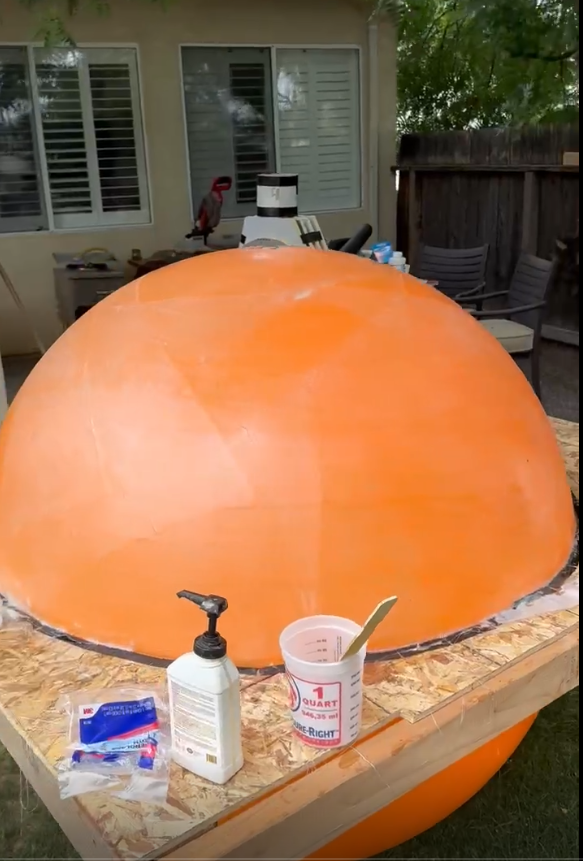
https://gyazo.com/cc8f92a8050dcc598462e101f87a3f91
Leave a comment:
-
I am using the 3:1:1:1 mix with burn-out fibers and stainless steel reinforcing needles. If you have a recommendation for the amount of burn-out fibers and SS needles to include in % of total brew that would be extremely helpful. I saw something like 3%. I also saw you use AR fibers/basalt fibers. Can't find too much info on that so might just add the SS and burn out and call it a day unless I find some more solid info on the other two. In my previous cast build I did not use hydrated lime, I used Portland cement and vermiculite. What are your alternative suggestions? I have looked through many threads and haven't seen an advised homebrew mix that includes all these separate "ingredients" in one.Originally posted by david s View PostNot too sure about your proposed mix, are you using a tried and proven mix recipe? You haven’t included proportions, but the strength of any mix is dramatically reduced if it includes vermiculite. In addition it makes the mix insulating rather than conductive. Also as Portland cement begins to deteriorate above 300C the strength of the casting could be further compromised. Hydrated lime in addition to Portland cement is an important ingredient in the mix, to take over as the cementious material should the Portland cement fail.
A 48” oven will be really heavy, usually a 4” supporting slab is recommended for most ovens with larger ones requiring perhaps more. However you do what you can get away with, but heavy brittle materials are vulnerable to travel.
2” of calcium silicate underfloor insulation is also considered minimal.
Lastly, I am going to use 4" of Casi board and a 4-inch concrete slab beneath. Because this is a mobile oven I am going to custom manufacture a steel stand for it to sit on. The logistics of this stand are going to be worked out with a friend who is an engineer. Will update the forums with the info I find out. I am going to use a steel curb that is larger than the diameter of the oven as a means of locking everything in. The void will be filled with vermicrete most likely. Also, I am going to cast the dome and gallery separately as I have seen you have advised this in previous builds.
Leave a comment:
-
Hey, I just finished my dome mold, I simply used epoxy, hardener, and fiberglass to cover a 48" medicine ball inflated into a hole cut into a table. I did 3 layers to make it very firm and support the weight of the concrete cast. Attached are images of the fiberglassed ball.Originally posted by Ronstarch View Postnuovopizzas would you mind sharing some details and photos of how you built the fiberglass mold for your current build?

- Likes 1
Leave a comment:
-
Not too sure about your proposed mix, are you using a tried and proven mix recipe? You haven’t included proportions, but the strength of any mix is dramatically reduced if it includes vermiculite. In addition it makes the mix insulating rather than conductive. Also as Portland cement begins to deteriorate above 300C the strength of the casting could be further compromised. Hydrated lime in addition to Portland cement is an important ingredient in the mix, to take over as the cementious material should the Portland cement fail.
A 48” oven will be really heavy, usually a 4” supporting slab is recommended for most ovens with larger ones requiring perhaps more. However you do what you can get away with, but heavy brittle materials are vulnerable to travel.
2” of calcium silicate under floor insulation is also considered minimal.Last edited by david s; 05-31-2023, 01:35 PM.
Leave a comment:
-
Yes I will take pictures and explain how I make the mold. I am remaking because I got the dimensions off, will update you shortly.Originally posted by Ronstarch View Postnuovopizzas would you mind sharing some details and photos of how you built the fiberglass mold for your current build?
Leave a comment:
-
nuovopizzas would you mind sharing some details and photos of how you built the fiberglass mold for your current build?
Leave a comment:

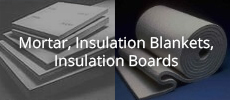
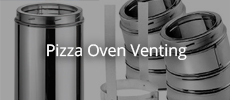


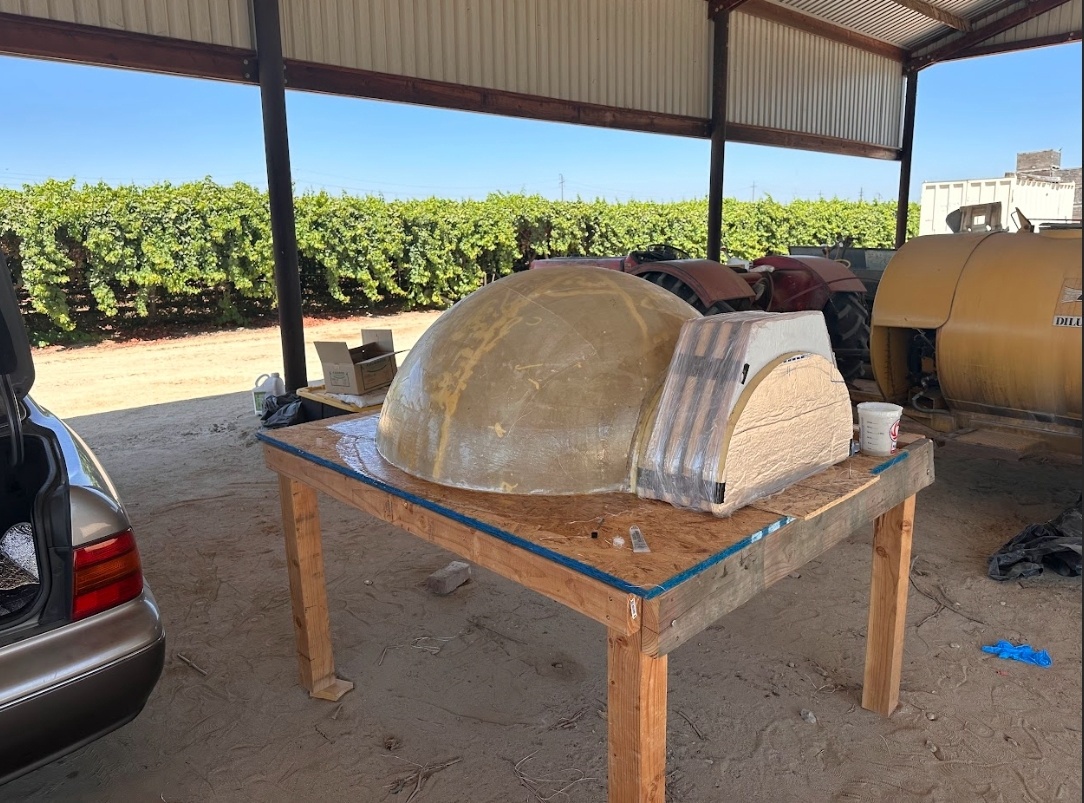
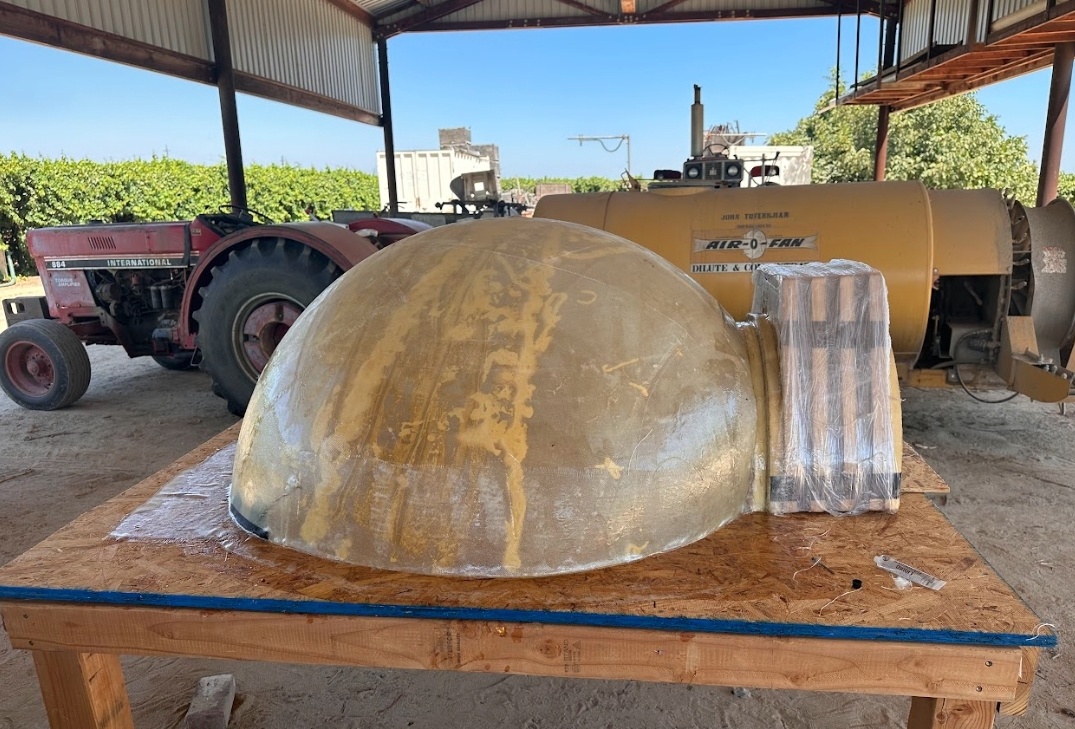
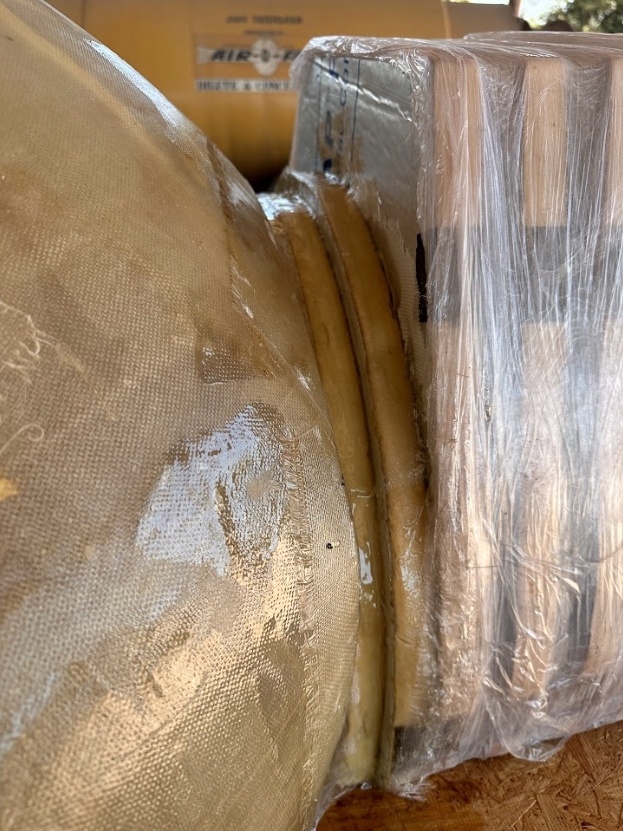

Leave a comment: